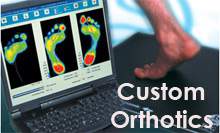What is Sciatica
Sciatica is the name given to pain, numbness or weakness in the areas that are supplied by the sciatic nerve. These areas include hip, buttock, thigh, calf and foot. The sciatic nerve is the longest nerve in the body and when compressed, irritated or inflamed can be debilitating.
When does it occur
Sciatica is often brought on by restrictions within the spine affecting the sciatic nerve and causing referred pain. Restrictions in the pelvis could cause a tightening in the gluteal muscles putting pressure directly on the sciatic nerve.
Sciatica can also be caused by more serious issues which is why it is important to consult a physiotherapist if you notice any referred pain in the leg. It may not always be a biomechanical or disc related issue that causes sciatica which is why its important it is diagnosed correctly.
Sciatica is most commonly preceded by a few weeks of back pain before the leg pain becomes worse than the back pain. In severe cases, it can damage nerves and leg reflexes and cause muscle atrophy of the lower leg most noticeably in the calf.
Often people wait until the pain is unbearable to consult with a physiotherapist. It is important to consult a professional when the pain initially begins as sciatica can cause long-term damage which means longer treatment and longer recovery times.
Sciatica Treatments
Sciatica can have numerous sources thus there are a number of Physiotherapy treatments, none of which involve drugs or surgery. Techniques we use include manual therapies (MT) including muscle energy technique (MET), core rehabilitation (CR), dry needling, soft tissue techniques (STT), trigger point therapy (TPT) and home exercise regime (HEP).
Consult one of our Physiotherapists to review your complete medical history and perform a thorough physical examination to determine the cause of your sciatica. You may require x-rays which our Physiotherapist will discuss with you when you attend the clinic. X-Rays are usually bulk billed so no additional cost is involved. Once all the information is gathered and reviewed treatment options are discussed.


